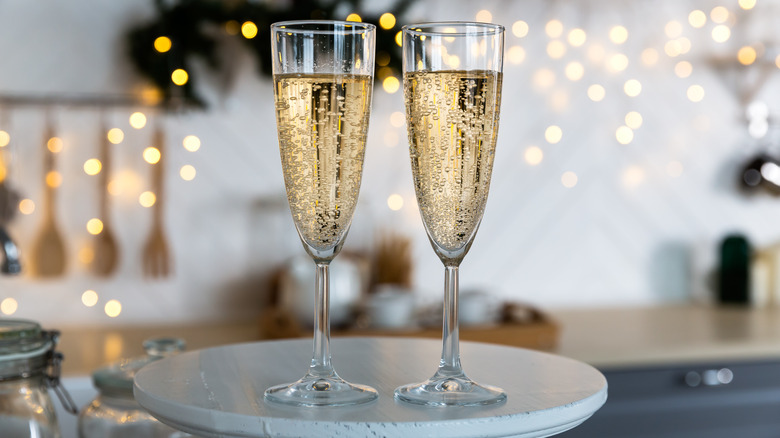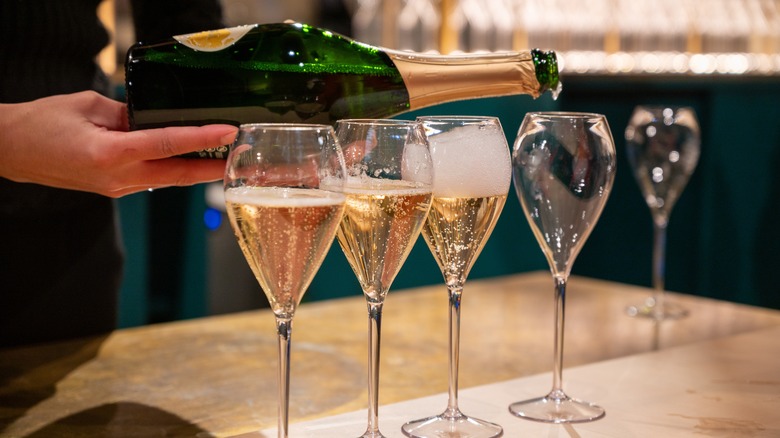How Many (Millions Of) Bubbles Are In Your Champagne Glass?
Knowing how many bubbles are floating in champagne is the kind of random knowledge that will help you win Trivia Night. Though the exact number has gone through deliberation, scientists have taken it upon themselves to determine the precise amount so we don't have to — so we can enjoy popping open another bottle, instead.
Gérard Liger-Belair published his findings in a scientific journal in 2014, much to the surprise of those who had been estimating the number of bubbles beforehand. Before Liger-Belair opened the cork to his research, scientists and lovers of Champagne were guessing around 15 million bubbles could rise in a single glass. With rigorous research, however, Liger-Belair determined the number to be closer to one million, insisting that previous estimates failed to consider the factor of carbon dioxide seeping out of glasses without creating any bubbles in the process.
While we were sipping glasses of bubbles and toasting to the good life, Liger-Belair was measuring the temperature of glasses, angles of champagne flutes, and exploring the complicated world of bubble dynamics. "I've always had a fascination with observing natural phenomena," Liger-Belair told Le Cordon Bleu. "The bubbles form and move according to often complex equations, which allows us to anticipate a certain number of elements that influence the drinking experience, such as the number of bubbles that will be produced, their size, the speed with which they will rise to the surface, and the way in which they will burst and disperse the wine's aroma."
When beverage bubbles and science collide
Before Liger-Belair stomped on the previous estimates of effervescence, champagne was assumed to hold around 15 millions bubbles in a flute glass. His research stomped a dent — or popped some bubbles — in the world of champagne science. Researchers in 2023 took up a similar fascination with champagne bubbles, setting out to concretely explain why bubbles in champagne travel upwards, in a straight direction, unlike bubbles found in other kinds of fizzy and carbonated drinks. Champagne has been known to contain surfactant-like molecules that can disperse tension between the fizzy drink and the floating bubbles. Not only do these molecules build flavor and create that unmistakable texture of Champagne, the molecules are responsible for that one-directional journey of bubbles from the bottom of the glass to the surface.
If you want to step on the pedal of champagne bubbles and try to get even more poured into your glass, serve champagne at a warmer temperature — not chilled — and pour the drink into a tilted flute glass. For those who simply want to enjoy a fresh pour of a chilled glass of champagne, we can't blame you. Pour away and enjoy without thinking about any science.

